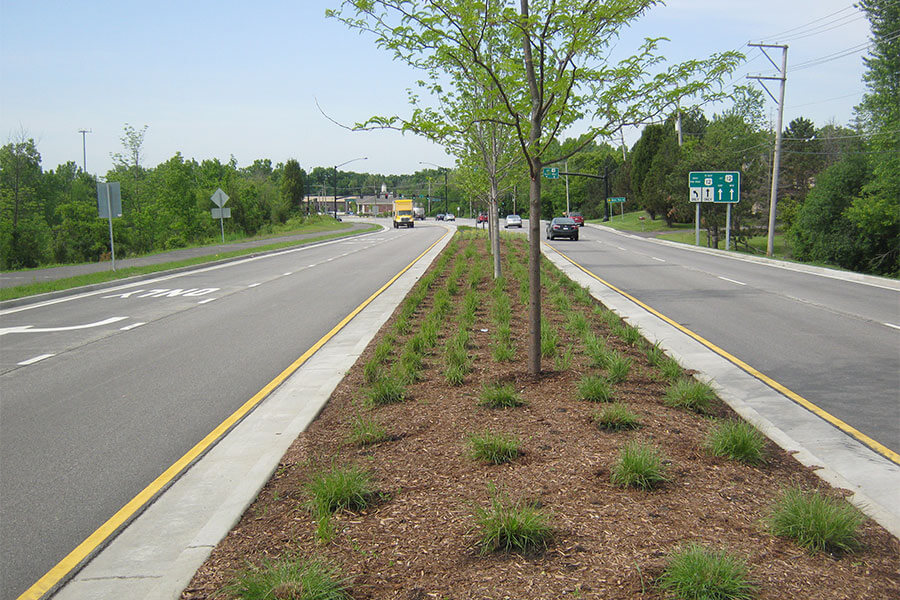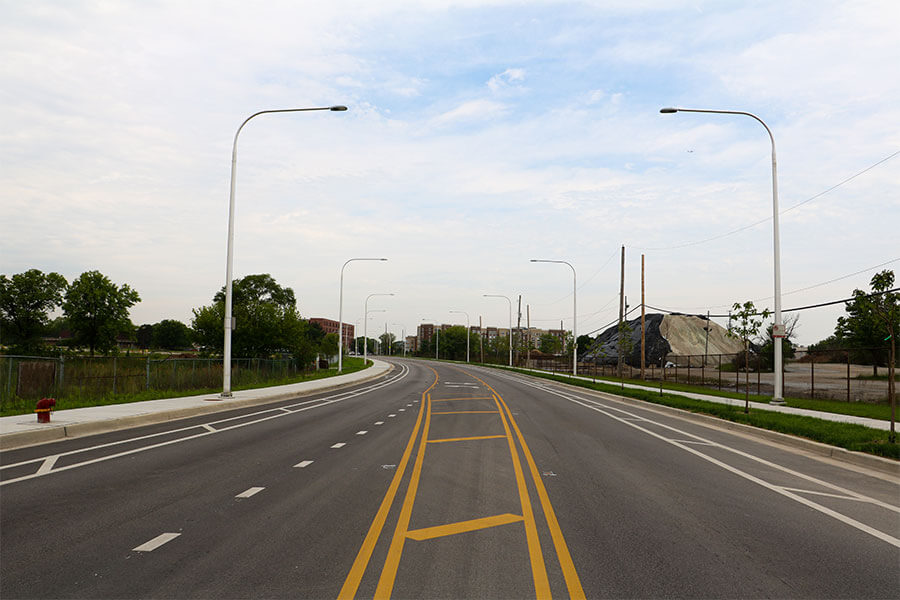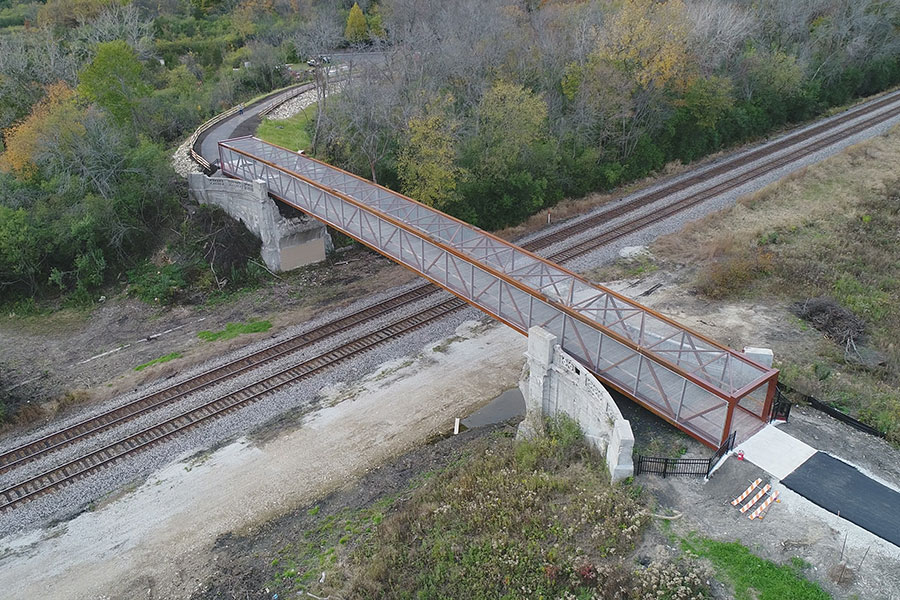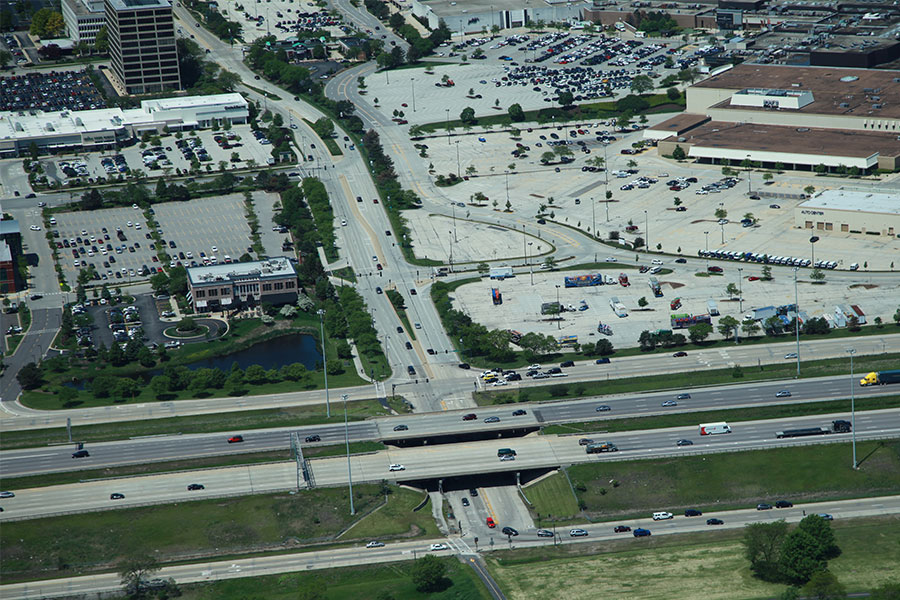Improving Capacity and Safety
Quentin Road is an important north-south arterial that runs between the Villages of Kildeer and Lake Zurich in southwestern Lake County. The travel demands of the existing 2-lane roadway had exceeded its capacity and required improvements for efficient travel and safety, as well as enhanced bike and pedestrian accommodations.
Civiltech was fortunate to have been retained for both Phase I and Phase II of this project which included widening and reconstructing 2-miles of roadway between U.S. Route 12 and IL Route 22. Not only have we worked to create a road that is more efficient and safe, we work to keep it clean! In 2014, we adopted part of this stretch of Quentin Road as part of the Lake County Division of Transportation’s Adopt-A-Highway Program. Twice a year Civiltech staff participates in litter collection along Quentin Road , from U.S. Route 12 to East Cuba Road.
Click on image to view large.
Phase I
As a result of the Phase I Study, improvement recommendations included two through lanes in each direction separated by a center median for left turn channelization at intersections. Although the Phase I engineering was funded locally, Civiltech and the Lake County Division of Transportation worked with the Illinois Department of Transportation (IDOT) to follow Federal-aid guidelines in order to remain eligible for future funds.
A Community Advisory Group (CAG) was formed to assist the project study group in developing a preferred improvement plan based on community interests and agency needs. CAG members included area residents and representatives from various governmental agencies. Also, an extensive public outreach program was conducted to educate and obtain input from affected property owners regarding implementation of noise walls.
Phase II
The capacity improvements included widening the roadway from two to four lanes and modernization of the two signalized intersections at West Cuba Road and East Cuba Road. During design, Civiltech focused on opportunities to minimize impacts, paying special attention to the construction cost estimate, proposed land acquisitions, and environmental components. We closely monitored the P, S & E development, permitting, local agency coordination and agreements, utility conflict assessment and relocations to make sure all these essential project elements were addressed in a timely manner throughout the engineering work. Retaining walls and ground improvement areas were included at various locations within the corridor to minimize impacts to wetlands, floodplains, trees, and adjacent property while traffic noise abatement was implemented through the residential sections.
The roadway corridor provided few suitable sites for off-road stormwater detention and water quality facilities which necessitated storm water management considerations. Civiltech worked with the local agencies to find solutions to the roadway drainage problems. Through an innovative use of detention properties that are outside the public right of way, we aimed to achieve storm water storage and sustainable roadway best management practices while preventing flood damage downstream to the four stream tributaries traversing Quentin Road.
Since both private and public utilities operate facilities within the corridor, adjustments and relocations of several utility facilities were completed including water main, sanitary sewers, and an 18-inch gas main. Civiltech worked closely with public works agencies and private utilities to accurately locate facilities with test pit data. Depicting facility data helped to resolve potential conflicts before they become problems.
Because construction was utilizing federal funds, the project was processed and approved through the IDOT Bureau of Local Roads and Streets.
This Project Incorporates the Following:
- Community Advisory Group (CAG)
- Roadway widening and reconstruction
- Improved capacity and safety
- Left turn channelization
- IDOT coordination
- Working within Federal-aid guidelines
- Utility coordination
- Enhanced bike and pedestrian facilities
Scope of Services
- Roadway and Highway Design
- Environmental Assessment
- Project development Report
- Intersection Design Studies
- Highway Noise Analysis
- Air Quality Analysis
- Location Drainage Studies
- Context Sensitive Solutions process
- Public Engagement
- Bike and Pedestrian Facility Design
- Hydraulic Studies
- Sustainable Design
- Stormwater Management
- Retaining Walls and Culverts including Type, Size, and Location Drawings
- Right of Way Acquisition
- Preparation of Contract Plans, Specifications, and Estimates
Similar Projects






